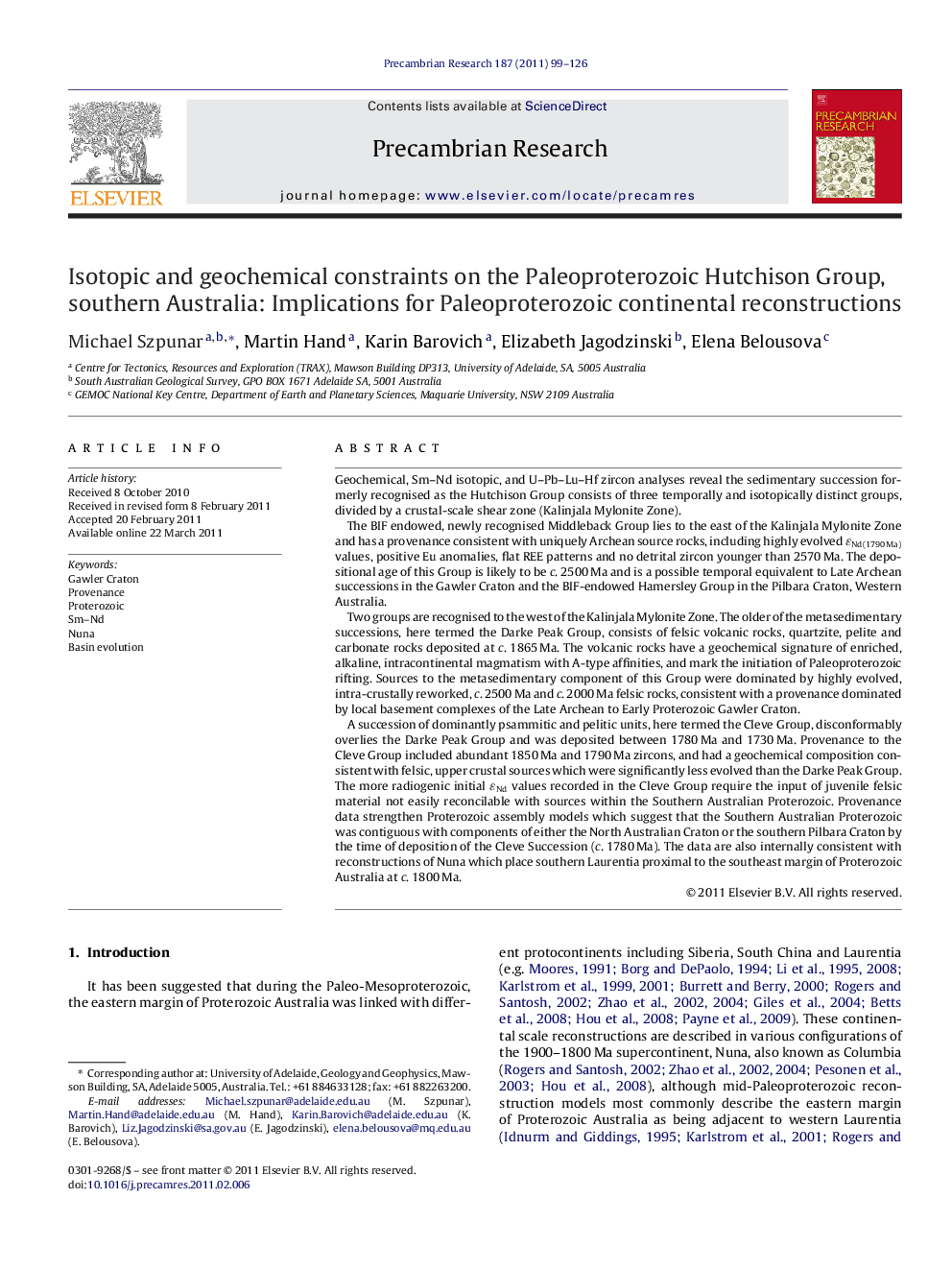| کد مقاله | کد نشریه | سال انتشار | مقاله انگلیسی | نسخه تمام متن |
|---|---|---|---|---|
| 4723840 | 1639670 | 2011 | 28 صفحه PDF | دانلود رایگان |

Geochemical, Sm–Nd isotopic, and U–Pb–Lu–Hf zircon analyses reveal the sedimentary succession formerly recognised as the Hutchison Group consists of three temporally and isotopically distinct groups, divided by a crustal-scale shear zone (Kalinjala Mylonite Zone).The BIF endowed, newly recognised Middleback Group lies to the east of the Kalinjala Mylonite Zone and has a provenance consistent with uniquely Archean source rocks, including highly evolved ɛNd(1790 Ma) values, positive Eu anomalies, flat REE patterns and no detrital zircon younger than 2570 Ma. The depositional age of this Group is likely to be c. 2500 Ma and is a possible temporal equivalent to Late Archean successions in the Gawler Craton and the BIF-endowed Hamersley Group in the Pilbara Craton, Western Australia.Two groups are recognised to the west of the Kalinjala Mylonite Zone. The older of the metasedimentary successions, here termed the Darke Peak Group, consists of felsic volcanic rocks, quartzite, pelite and carbonate rocks deposited at c. 1865 Ma. The volcanic rocks have a geochemical signature of enriched, alkaline, intracontinental magmatism with A-type affinities, and mark the initiation of Paleoproterozoic rifting. Sources to the metasedimentary component of this Group were dominated by highly evolved, intra-crustally reworked, c. 2500 Ma and c. 2000 Ma felsic rocks, consistent with a provenance dominated by local basement complexes of the Late Archean to Early Proterozoic Gawler Craton.A succession of dominantly psammitic and pelitic units, here termed the Cleve Group, disconformably overlies the Darke Peak Group and was deposited between 1780 Ma and 1730 Ma. Provenance to the Cleve Group included abundant 1850 Ma and 1790 Ma zircons, and had a geochemical composition consistent with felsic, upper crustal sources which were significantly less evolved than the Darke Peak Group. The more radiogenic initial ɛNd values recorded in the Cleve Group require the input of juvenile felsic material not easily reconcilable with sources within the Southern Australian Proterozoic. Provenance data strengthen Proterozoic assembly models which suggest that the Southern Australian Proterozoic was contiguous with components of either the North Australian Craton or the southern Pilbara Craton by the time of deposition of the Cleve Succession (c. 1780 Ma). The data are also internally consistent with reconstructions of Nuna which place southern Laurentia proximal to the southeast margin of Proterozoic Australia at c. 1800 Ma.
► We characterise age and provenance of the Hutchsison Group southern South Australia. It is separtated into three Groups, with depositional ages from c. 1790 Ma to c. 2550 Ma. The two oldest Groups have a provenance likely to include the SAC and WAC. The youngest group had a provenance difficult to reconcile within southern Australia. Reconstruction models placing Laurentia near Australia at c. 1790 Ma are supported.
Journal: Precambrian Research - Volume 187, Issues 1–2, May 2011, Pages 99–126